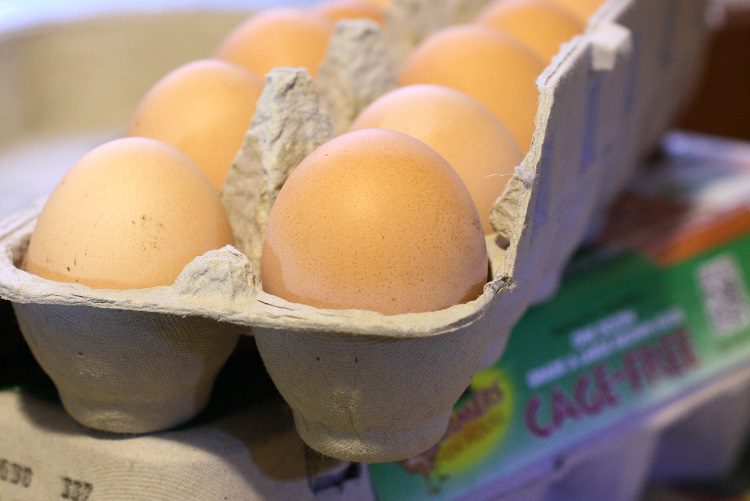The ins and outs of pasteurized eggs
March 12, 2025 by DarcieEggs are in short supply in many areas due to outbreaks of avian influenza, commonly known as ‘bird flu’. In addition to worrying about the availability of eggs, consumers are also concerned with their food safety aspects as well. Scientists and food safety experts believe there is minimal to no risk of exposure to avian influenza from eating eggs, so that is one concern eliminated. However, there are small but real risks of salmonella or other bacteria contaminating eggs and potentially causing illness. One way to make eggs safe is to cook them to a temperature of at least 160 degrees Fahrenheit, the ‘instant kill’ temperature that destroys nearly all pathogens. There are instances when you might want to have an egg that is not hard cooked or even uncooked, as in salad dressings or cocktails. That is where pasteurized eggs come into play, as Food and Wine explains.
Commercially pasteurized eggs have been heated to a temperature of about 130 degrees Fahrenheit and held at that temperature long enough to kill bacteria. This makes them safer to consume when not fully cooked. You can buy pasteurized eggs in the shell or in cartons. In supermarkets around my town, which is near many egg farms, pasteurized eggs in the shell are easy to find but they may be more scarce in other areas. Cartons of whole eggs or egg whites are easier to source, but do watch the labels because sometimes ingredients are added which can change the way the eggs can be used. For example, some cartons labeled as “100% egg whites” can also include starches, gums, and even small amounts of oil, meaning they will never be suitable for making meringue.

The pasteurization process also causes physical changes to the whites that may affect how they set when cooked and will definitely affect how they whip. The article suggests adding cream of tartar or another acid to help the whites retain their structure when whipped, and it also notes that it may take up to twice as long to whip to peaks. My experience with both pasteurized eggs in the shell and cartons of whites has been dismal when used to make meringues. Personally, I haven’t been able to achieve stiff peaks, but that might be a ‘me’ thing. The whites did perform well in other applications such as cake batter.
You can make a safe meringue by using the Swiss meringue technique, making sure to heat the whites and sugar to 160 degrees Fahrenheit before whipping. The article suggests that an Italian meringue would also be safe, but I disagree because even though the temperature of the sugar syrup is very high, there is no way to ensure that the entire meringue mixture gets to a safe temperature. If anyone is a food safety expert and would like to weigh in, please do so. That said, I make Italian meringue buttercream a lot without using pasteurized whites; it is just a matter of risk tolerance as to how safe you want the final product to be.
Categories
- All Posts (7075)
- Antipasto (2205)
- Author Articles (250)
- Book News (944)
- Cookbook Giveaways (996)
- Cookbook Lovers (262)
- Cooking Tips (116)
- Culinary News (299)
- Food Biz People (558)
- Food Online (800)
- Holidays & Celebrations (277)
- New Cookbooks (154)
- Recipes (1520)
- Shelf Life With Susie (231)
- What's New on EYB (134)
Archives
Latest Comments
- JimCampbell on Food news antipasto
- Indio32 on Four outstanding independently published cookbooks worth your attention
- nvernon on Four outstanding independently published cookbooks worth your attention
- fayegibson on Four outstanding independently published cookbooks worth your attention
- Pizzacat13 on Balli Balli – Cookbook Giveaway and Quick Bites
- Laura1 on For the Love of Lemons by Letitia Clark – Giveaway
- fms95032 on For the Love of Lemons by Letitia Clark – Giveaway
- fms95032 on 20 Amici – 40 Ricette Cookbook Giveaway
- fms95032 on French at Heart – Cookbook Giveaway
- Shelmar on Tea innovations